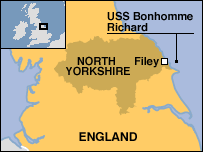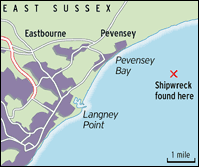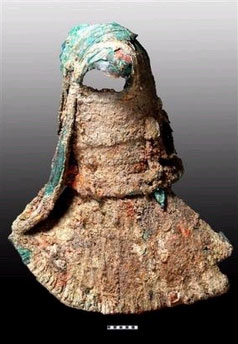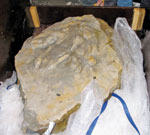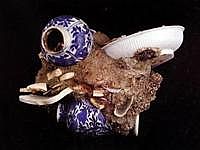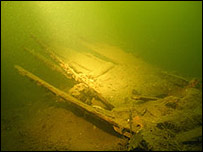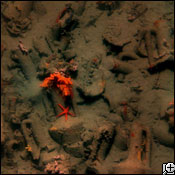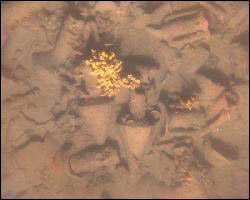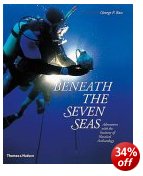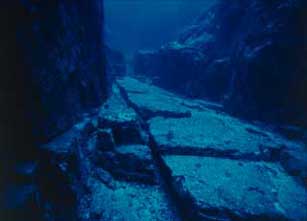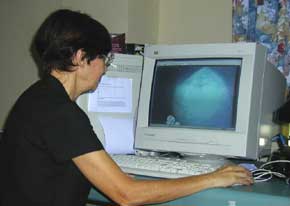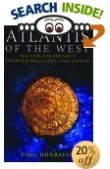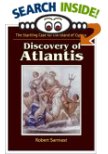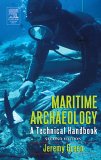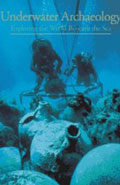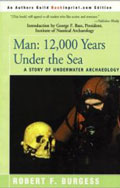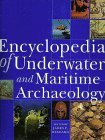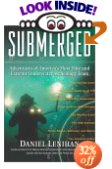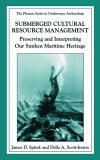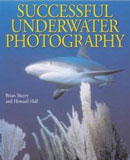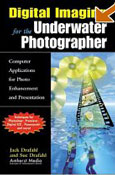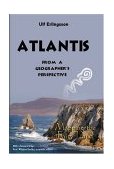|
“Experts seek to find famous wreck”
June 22, 2006, BBC News Online, UK: “Experts have expressed confidence that they can find the sunken wreck of the ship made famous by legendary Solway born sailor John Paul Jones next month.
Now underwater archaeology experts will use hi-tech methods to try to find it.
Dr Robert Neyland, head of the underwater archaeology unit at the US Navy Historical Centre, will head a team of six on a three-week search.”
“Murky history of the sunken Endeavour”
June 16, 2006, The Sydney Morning Herald, Australia: “Marine archaeologists are discovering the hidden story of how Captain Cook’s ship came to be at the bottom of an American harbour, writes Steve Meacham.
FOR a marine archaeologist such as Kieran Hosty, the harbour at Newport, Rhode Island, is one of the most frustrating places on earth. The diving is neither deep nor dangerous, yet the muddy waters hide their secrets well.
‘It’s a very busy harbour, with thousands of small boats’, says Hosty, of the Australian National Maritime Museum. ‘It’s an inlet with a lot of tidal flow. Visibility is poor, one or two metres at best.’
For seven years, a team of volunteer divers – led by Dr Kathy Abbass of the Rhode Island Marine Archaeology Project and including Australian experts like Hosty – has combed the harbour floor, searching for the holy grail of maritime archaeology: the wreck of Captain Cook’s Endeavour.”
“Diving into history in King Herod’s harbor”
June 06, 2006, Reuters, UK: “Above the glistening waves off the shores of the Israeli city of Caesarea, a group of scuba divers suit up to begin their descent into history.
As they slowly sink underwater, the light disperses to reveal remnants of what experts say was one of the biggest and most sophisticated sea ports of the Roman Empire.
After around 2,000 years, the ancient harbor is again open for business. The tourism business, that is.
Israeli and North American archeologists discovered the ruins some 40 years ago and, since last year, have worked to preserve the remnants, some of which once rested above the surface, to create Israel’s first underwater archeological museum.”
“Ship found in Capiz may be less than 250 years old: team”
June 02, 2006, Sun Star, Philippines: “An exploration group from the National Museum on Thursday ruled that the ship wreckage is not that of a galleon based on the artifacts and objects retrieved from its area.
Bobby Orillaneda, archeologist from the National Museum Underwater Archeology Division, said after his initial examination on the artifacts being kept at the residence of Mayor Antonio Del Rosario of Roxas City, they were not as old as 250-year-old galleons.
‘Masyadong bata yung mga nakita kong objects na allegedly nakuha doon sa ilalim ng tubig (The recovered objects were not as old)’, Orillaneda said during the site and surface inspection Thursday morning.
He added, ‘But it is still premature to conclude kasi marami pang basis na isa-ilalim ang mga makukuha doon sa ilalim bago tayo maka-conclude (But it’s too early to conclude because there are some bases that need to considered).’ “
“Expedition seeks clues to lost Bronze Age culture”
June 01, 2006, Yahoo News/Reuters, USA: “An underwater explorer who found the Titanic and a team of international scientists will soon survey waters off the Greek island of Crete for clues to a once-powerful Bronze Age-era civilization.
The expedition about 75 miles northwest of Crete aims to learn more about the Minoans, who flourished during the Bronze Age, and seeks to better understand seafaring four millennia ago, the scientists said.
U.S. researchers say the Minoans were engaged in broad-based trade with other civilizations, such as the Mycenaeans on mainland Greece and perhaps with peoples as far away as the present-day Middle East.
‘”No one knows who the Minoans were’, said Robert Ballard, an oceanography professor at the University of Rhode Island who discovered the Titanic in the North Atlantic in 1985.”
“After 300 years, the sea gives up the Resolution”
May 31, 2006, The Daily Telegraph, UK: “Three amateur divers trying to free snagged lobster pots have discovered the wellpreserved remains of what is thought to be the 17th century warship Resolution.
Their find, made last April but kept secret until this week so as not to alert treasure hunters, has led to the Government giving the wreck protected status to allow archaeologists the chance to establish beyond doubt that it is Resolution.
At least 45 cannon have been found and there are high hopes that the hull, preserved in silt, remains substantially intact. ‘This is a hugely significant find’, said Adrian Barak of the Nautical Heritage Association.”
“Novice divers find wreck of 17th century warship”
May 29, 2006, The Independent, UK: “A fisherman and a novice diver may have made a remarkable discovery in British waters close to the Sussex coast – the wreck of the famous 17th-century warship, HMS Resolution.
The Culture Minister David Lammy will announce today that the remains have protected status, in a bid to deter rogue divers from raiding the site while archeologists confirm whether it is the 70-gun vessel sunk in the great storm of November, 1703.
Three divers from Eastbourne made the remarkable discovery on 17 April last year when they were asked to clear some trapped lobster pots for local fishermen.
The discovery has been kept secret until now, while English Heritage and the Government discussed how best to protect it.”
“Egypt to excavate Roman city submerged in sea”
May 22, 2006, Reuters, UK: “The Egyptian authorities have given the go ahead for the underwater exploration of what appears to be a Roman city submerged in the Mediterranean, Egypt’s top archaeologist said on Monday.
Zahi Hawass said in a statement that an excavation team had found the ruins of the Roman city 35 km (20 miles) east of the Suez Canal on Egypt’s north coast.
Archaeologists had found buildings, bathrooms, ruins of a Roman fortress, ancient coins, bronze vases and pieces of pottery that all date back to the Roman era, the statement said. Egypt’s Roman era lasted from 30 BC to 337 AD.
The excavation team also found four bridges that belonged to a submerged castle, part of which had been discovered on the Mediterranean coastline in 1910.”
“Log may have link to Noah’s flood”
May 19, 2006, Edmonton Journal, Canada: “An Ontario farmer digging a backyard pond has unearthed a scientific stunner – a perfectly preserved tree from the end of the last ice age that could yield clues about prehistoric climate change and the catastrophic collapse of a glacial dam in ancient Canada that has been linked to Noah’s flood.
The primordial pine, about 75 centimetres wide and 261 years old when it was entombed in silt 86 centuries ago, has been tested at a University of Toronto radiocarbon laboratory and will be studied further by Stuart Manning, a Cornell University archeologist whose research on a 3,500-year-old olive branch found in Greece recently rewrote the dating of the Bronze Age.
The log was found in the Muskoka town of Bracebridge, about 175 kilometres north of Toronto.
The specimen is one of the oldest and largest examples of prehistoric wood ever found in eastern North America – so large, in fact, that about half of it has been given to a local carver who’s already making wooden bowls evoking an era when Stone Age tribes were just beginning to inhabit Eastern Canada.”
“US archaeologists may have found
May 19, 2006, M & C News, Scotland: “Archaeologists are hot on the trail of the sunken wreck of the Endeavour, commanded by Captain Cook in his first epic voyage across the Pacific Ocean more than 200 years ago.
The Endeavour is believed to be one of 12 ships sunk by the British off the coast of Newport, Connecticut in 1778, in an attempt to fend off a French attack on Newport Harbour. Six of the 12 ships were first discovered by a team from the University of Rhode Island in August 2005, but divers only recently dated them back to the 18th century.
‘The chances that the Endeavour is among them is 50-50’, Professor Rod Mather, who first made the discoveries, told Deutsche Presse- Agentur dpa on Friday.”
“Cannon from QAR recovered, displayed”
May 18, 2006, The Sun Journal, USA: “A fourth-grade class from Wayne Christian School in Goldsboro got a little extra surprise during its field trip to Fort Macon State Park Wednesday.
They did not know until they arrived that a cannon, retrieved only a few hours earlier from the Queen Anne’s Revenge shipwreck site, would be on display in the parking lot.
Archaeologists say there is mounting evidence that the shipwreck is the pirate Blackbeard’s flagship, including 24 cannons that have been found so far at the site. Wild-Ramsing said the ship was heavily armed when it went down attempting to enter the inlet in the 18th century.”
“Taking a plunge”
May 18, 2006, Al-Ahram Weekly, Egypt: “For the next five months Berliners can dive to the Mediterranean seabed and explore the submerged world of ancient Egypt.
Against the 19th-century colonnaded façade of the Martin Gropius-Bau Museum, smiling girls wearing costumes modelled on those of ancient Amarna and with gilded cobra crowns on their heads greet visitors to Berlin’s ‘Egypt’s Sunken Treasures’ exhibition, which opened last week.
In this innovative scenario visitors can enjoy the lost treasures of the Pharaohs which have lain underwater off the Alexandria coast for more than 1,500 years.
French Art director David Delice has converted the Martin Gropius-Bau Museum’s galleries into a replica of the ancient sunken cities of Herakleion and Canopus in Abu Qir Bay, near Alexandria.”
“Cannon from Queen Anne’s Revenge to be raised”
May 17, 2006, The Sun Journal, USA: “It hasn’t been off the ocean floor for nearly 300 years. After underwater archaeologists raise a cannon from the Queen Anne’s Revenge shipwreck site today, it will be on public display for one hour at Fort Macon State Park.
“If you don’t see it then, you won’t see it for a while,” said Mark Wilde-Ramsing, QAR project director. At least not the real McCoy.
A replica of this cannon is featured in the foreground of a QAR shipwreck display at the newly renovated North Carolina Aquarium at Pine Knoll Shores, which opens to the public Friday.
Following the viewing, the real cannon will be taken to the QAR Conservation Lab in Greenville for a 3- to 4-year cleaning and preservation process.”
“Ancient Alexandria Exhibit: Murder, Mayhem
May 11, 2006, Spiegel Online, Germany: “Treasure hunter Franck Goddio has spent years bringing the sunken city of Alexandria to the surface. The results of his labors, now premiering in Berlin, reveal incest, fratricide and iniquity. And breathtaking beauty.
The pieces that will be on display in the exhibit entitled ‘Egypt’s Sunken Treasure’, opening to the public on May 13, but ceremoniously unveiled by German President Horst Köhler and visiting Egyptian President Hosni Mubarak on Thursday, were flown directly to Germany on board a ‘Beluga’ cargo plane provided by Airbus.
The aircraft’s unusual cargo also includes astronomic calendars, jewels, gold coins, penises made of lead and the spout of a baby’s bottle.
The statue of Hapi, more than five meters (16.4 feet) tall, is considered the largest freestanding sculpture of an Egyptian god in existence.”
“Ancient walled city discovered after reservoir
May 10, 2006, The News Tribune/AP, USA: “The ruins of a 2,000-year-old walled city have been found in a reservoir on China’s northeastern border with North Korea, China’s official news agency reported today.
The mud-covered ruins were exposed when the water level in the Yunfeng Reservoir was lowered for repairs, Xinhua News Agency said, citing government officials.
The reservoir is on a tributary of the Yalu River, which forms the border of the two countries.”
“Fisherman Nets Ancient Statue in Greece”
May 09, 2006, CRI Online, China: “A Greek fisherman has handed over to authorities a large section of an ancient bronze statue brought up in his nets in the Aegean Sea, officials said on Monday.
The male torso was located last week near the eastern Aegean island of Kalymnos, the Culture Ministry said in an announcement.
Together with the torso, the fisherman brought up two small bronze pieces believed to belong to the statue, and a wine-jar from the ancient city of Knidos – in what is now Turkey – dating from the first century B.C, the ministry said.”
“Ancient treasures fished from Greek seas”
May 08, 2006, IOL/AFP, South Africa: “A Greek fisherman has netted the remains of a bronze horseman and an amphora, treasures from ancient Greece preserved for two millenia in the Aegean Sea, officials said on Monday.
The haul, which the man discovered in his nets off the island of Kalymnos last Tuesday, was delivered to police who then handed it over to archaeology service officials, the culture ministry said in a statement.
Greece, as part of a programme to recuperate and preserve ancient artifacts, offers treasure finders a reward worth 10 percent of the object’s value to return it to state authorities.
The Kalymnos find includes the fully intact amphora and several fragments of a bronze statue, the largest of which is a 95cm bust of the rider which is heavily covered in marine organisms, the ministry said.”
“Israel launches world’s first underwater museum”
May 02, 2006, Hindustan Times, India: “Israel has launched the world’s first underwater museum from the remains of what was once the most impressive port in the Roman Empire.
Divers can now don their wet suits and tour the sign-posted remains of the magnificent harbour of Caesarea along the Mediterranean coast of Israel built by King Herod to honour his Roman patron Caesar Augustus.
The visitors get to see some 36 different sign-posted sites along four marked trails in the sunken harbour covering an area of 87,000 square yards.”
“Protection promised for Isle’s ancient shipwreck”
April 29, 2006, Western Morning News, England: “Improved measures to protect an ancient shipwreck off the Isles of Scilly are to be taken. Culture minister David Lammy wants to extend an order making it a criminal offence for anyone to interfere with Bartholomew Ledges without a licence.
The sixteenth century armed ship is thought to have sunk in the late 1500s. It once carried medieval bronze bell fragments.
In the 1980s the site was designated as a protected wreck. In recent years a team of divers carried out a survey and found the area receiving protection needed to be expanded.
Archaeological reports suggested that the wreck has shifted on the seabed, probably because of natural disturbance. As a result it has been redesignated to maintain its protection.
Mr Lammy said: ‘It is vital that we provide the opportunity for current and future generations to have access to these significant examples of maritime heritage.’“
“Herod’s harbour turns itself into bit of a dive”
April 29, 2006, The Times, UK: “Float out beyond the Crusader city walls, Roman aqueduct and 19th-century mosque. Then descend through a cloud of quicksilver bubbles 20ft and 2,000 years to Herod The Great’s sunken harbour.
Here, just off Caesarea port, a unique underwater archaeological park opened yesterday, showcasing 80,000sq m of a sunken harbour built by the biblical king of the Jews for Caesar Augustus.
t is no ordinary ‘museum’ — no chattering schoolchildren, no queues, no headphones, and the only sound that of boat propellers passing above your head as you swim around the ‘exhibits’.
In a dim green light beneath the waves, guides with waterproof maps lead divers along a marked route around the harbour foundations and sunken ships left on the seabed from 2,000 years of Phoenician, Roman, Jewish, Crusader, Byzantine, Mameluke and British history.
During a 53-minute tour down to 20ft (6m) The Times saw exhibit 10, metal sheets of a steamer sunk in 1950 as a breakwater for the modern quay; exhibit 11, an Herodian quay of ashlar slabs; exhibit 12, a later Roman shipwreck; exhibit 13, six anchors; and 14, the Prokumatia, the narrow wall of an Ancient Roman breakwater.”
“Shipwreck offers new clues to Islam’s arrival”
April 23, 2006, The Jakarta Post, Indonesia: “Most historians here agree that Islam arrived in the country in the early 11th century, but new findings retrieved from a shipwreck near Cirebon, West Java, suggest the religion might had arrived in late 10th century.
Unfortunately, any attempt to establish the exact date of Islam’s arrival in the country risks hitting a snag as the police have confiscated the recovered artifacts.
A German scientist working for the Maritime Affairs and Fisheries Ministry, Horst H. Liebner, said recently a joint salvage mission by PT Paradigma Putra Sejahtera (PPS) and Belgium-based Cosmix retrieved 490,000 pieces of ceramics, glassware, stoneware and metal items from the wreckage of a ship some 70 kilometers off the Cirebon coast.
Subsequent scientific analyses found the ceramics were made in China between 930 AD and 990 AD, while the glassware was brought from Cairo, Damascus, Baghdad and Basra.
‘It is safe to conclude that the ship sank in the second half of the 10th century, possibly around 960 AD’, Liebner told The Jakarta Post recently.”
“Charlevoix could be Griffin research site”
April 18, 2006, The Record-Eagle, USA: “He was the first European to sail a ship on the northern Great Lakes, and also the first to lose one.
The Griffin, a primary ship of the French explorer La Salle, is thought to have disappeared in a storm in northern Lake Michigan in the fall of 1679.
A Great Lakes treasure hunter who thinks he’s found it wants to stage his archeological operation in Charlevoix.
City leaders have been asked to provide dock space this summer so crews, including scientists from the Chicago Field Museum of Natural History, can do research. It could be an important discovery, said Scott J. Demel, the Field Museum’s adjunct curator in anthropology.
Demel said scientists would conduct sonar and other surface tests at the wreck site. It’s in the mouth of Green Bay, about 70 miles west of Charlevoix.”
“Shipwrecks yield bounty of information”
April 17, 2006, Daily News-Miner, Alaska, USA: “There are more than 4,000 sunken ships throughout the coastal regions of Alaska. Those historical sites, though shrouded under chilly waters, hold a trove of historical value to the state.
Earlier this month, University of Alaska Fairbanks scientists joined state researchers in diving to a few of the wreckage sites to evaluate their condition.
‘There were some spectacular wrecks there’, said Professor John Kelley. ‘But there’s been a lot of tragedy as well.’
Kelley, with the School of Fisheries and Ocean Science at UAF, helped secure a grant from the National Oceanic and Atmospheric Administration late last year to look at a handful of sunken vessels in Southeast Alaska.
He was interested in looking at the degradation and marine biology surrounding wreckages, while state and federal agencies like Department of Natural Resources and Minerals Management Service wanted to research the condition of the sites for cultural and archeological documentation.
The collaboration was a first among the several agencies for scientific and cultural research.” [Full Story]
“What’s for dinner, deer?”
April 16, 2006, The Scotsman, Scotland: “YOU may think that Iron Age man was concerned only with day-to-day survival; that he sat down after a hard day’s hunting or working the land to nothing more exciting than a bowl of gruel or, if he was lucky, some kind of stew.
Nothing could be further from the truth, according to Barrie Andrian, a leading underwater archaeologist and the managing director of the Scottish Crannog Centre. ‘Our findings show that the diet of Iron Age man displays a level of sophistication that you might not imagine’, she says.
The centre was founded at Kenmore in 1997 by Andrian and her husband, crannog expert Dr Nick Dixon. It is based on the 2,600-year-old site of the Oakbank crannog, which lies preserved beneath the peaty waters of Loch Tay.
Working with volunteers, the couple have spent several years searching through the remains – which is no mean feat considering the site is underwater. And it took them three years to construct their own crannog, a timber dwelling built on stilts over the water, which links the way of life of people in 600BC with ours today.
One of the most interesting finds was a huge rubbish tip – around four tons of material in all. Excavations have allowed the team to build up a detailed picture of what crannog dwellers ate. Over 200 varieties of plant have already been identified. ‘Iron Age people had a completely natural, organic diet’, says Andrian.
‘Everything they ate was gathered or cultivated by their own family. Nothing edible would be thrown away. Plants we now consider to be weeds, such as nettles, dock, fat hen and meadowsweet, regularly appeared on the Iron Age menu’..”
“Divers accused of looting shipwreck released
April 12, 2006, CDNN, New Zealand: “A French and German diver accused of stealing treasures from shipwrecks in Indonesian waters and held by authorities here for more than a month have been released pending further investigation.
Frenchman Jean-Paul Blancan and German Fred Dobberphul were arrested on March 8, accused of illegally salvaging thousands of treasures from a 10th-century wreck in the Java Sea over the past year.
While the two have been released, they remain under investigation, accused of illegally salvaging a cargo including 250,000 pieces of china, thousands of semi-precious stones and bronze and gold objects bought from Arab traders.”
“Divers recover dinosaur footprint in Yorkshire”
April 12, 2006, Dive Magazine, England: “An operation to remove a 160-year-old dinosaur footprint from a Yorkshire beach has been successfully completed by divers of Scarborough SAC.
However, during a storm, it fell from the cliffs onto a rocky shore that is only accessible on foot or from the sea.
The geologist group, together with English Nature and Scarborough Council, called on the services of the diving club to help recover the footprint, so it could be displayed at the Rotunda Museum in Scarborough.”
“New technologies help locate our underwater treasures”
April 11, 2006, Columbus Dispatch, USA: “While the hardy robots Spirit and Opportunity are busily exploring the surface of Mars, other robots have been investigating another frontier — the bottom of the sea.
The Woods Hole Oceanographic Institution announced last month that a team of Greek and American scientists had completed a study of a fourth century B.C. shipwreck off the Greek island of Chios.
They had the help of a remarkable robot called SeaBED. Equipped with a digital camera and specialized sonar, SeaBED photographed and mapped the wreck.
‘By using this technology, diving archaeologists will be freed from routine measuring and sketching tasks, and instead can concentrate on the things people do better than robots: excavation and data interpretation’, Hanumant Singh, the engineer who designed SeaBED, said in a statement.
These researchers hope to unlock the historical secrets of Homer’s ‘winedark sea’ and shed light on Bronze Age travel and trade. According to the Cleveland-based Maritime Archaeological Survey Team, or MAST, Lake Erie has its share of historical secrets.
There are more than 1,400 shipwrecks in Lake Erie, and less than a third of these have been located. Although robots such as SeaBED have yet to be tested here, researchers are using high-tech sonar to find wrecks on the lake bottom.” [Full Story]
“Divers Find Gold, Silver From 400-Year-Old
April 11, 2006, Local10 News, USA: “Divers have found two gold bars and 15 silver coins which had been buried beneath the ocean floor off Key West for almost 400 years.
The objects are believed to be from the shipwreck of the Nuestra Señora de Atocha, a Spanish galleon that sank in 1622.
The bars were discovered Sunday by the divers from Mel Fisher’s Treasure Salvors on the treasure-hunting ship the Magruder about 35 miles off of Key West. They were found beneath about 12 feet of sand in 20 feet of water.” [Full Story]
“EADS: ‘Egypt’s Sunken Treasures’ riding high”
April 11, 2006, Noticias.info, Spain: “Every bit as remarkable as the world premiere of the exhibition on ‘Egypt’s Sunken Treasures’, which is to be shown in Berlin, Germany from 13 May through 04 September, is the manner in which the artefacts will be brought from Alexandria to Berlin: some of them weigh several tons and for the journey they are to be loaded onto the transport aircraft Airbus 300-600ST Beluga, which Airbus is lending for this special cultural undertaking.
Having spent thousands of years on the bottom of the sea, the monumental statues, fragments of ancient columns and cult objects will arrive in Germany’s capital aboard an aircraft with today’s most voluminous cargo hold.
The exhibit will present 489 artefacts discovered during underwater archaeological excavations done from 1992 to 2005.
Around 500 objects, among them several monumental statues as well as coins, jewellery and cult objects will be on display to the general public in the world premiere ‘Egypt’s Sunken Treasures’.
The artefacts span from the days of the last pharaohs to Alexander the Great and the period of Greek rule to the Roman conquest that ended after the spread of Christianity with the age of Islam.” [Full Story]
“Ancient sea artifacts displayed at souhern sea festival”
April 11, 2006, Viet Nam News Agency, Viet Nam: “More than 1,000 ancient artifacts excavated from shipwrecks are on display at an exhibition opened in the southern coastal province of Ba Ria-Vung Tau on April 10 as part of the 2006 local Sea Festival.
Exhibits include ceramics and porcelains, bronze objects, and even cannons from dozens of shipwrecks around Cu Lao Cham offshore the central province of Quang Nam, and various sites off the coast of the southern provinces of Kien Giang, Ba Ria-Vung Tau, Binh Thuan and Ca Mau.
These objects, believed to have been made many centuries ago, testify to the existence of a ‘silk road on the sea’ and contribute to research on Vietnamese international trade via sea routes.” [Full Story]
“Project aims to preserve shipwrecks scattered off shore”
April 09, 2006, Sun-Sentinel, USA: ” Just offshore they wait, hoarding their secrets, some perhaps for centuries. They convey a salty whiff of romance, high adventure and, however exaggerated in popular imagination, a lust for sunken treasure.
These are the shipwrecks whose remains lie scattered like busted skeletons on the sea floor off South Florida.
In Broward County, officials aim to locate and chart their number, which they say could top 30, but any treasure they tally will be in terms of the wrecks’ cultural, historical and recreational value.
Only three other areas in the state, St. Augustine, the Keys and Pensacola, have conducted such a shipwreck inventory. Eck plans to hire a fulltime underwater archaeologist to study old newspaper articles and shipping and insurance records, then select sites most likely to contain shipwrecks.” [Full Story]
“Foreign shipwreck divers in the wrong: Police”
April 08, 2006, The Jakarta Post, Indonesia: “Despite the confirmation of the legality of a shipwreck excavation permit from the Maritime and Fisheries Ministry, the National Police are insisting that they will continue legal action against two foreign divers currently under police detention.
‘We’ll see the result of their trial. The judges will determine the legality of their permit’, National Police spokesman Brig. Gen. Anton Bachrul Alam said Thursday.
German diver Fred Dobberphul and his French colleague Jean-Paul Blancan were arrested earlier last month for allegedly stealing ancient artifacts worth millions of dollars from shipwrecks in waters off West Java.
Both divers were employed by a local company PT Paradigma Putra Sejahtera to assist a scientific excavation project that started in April 2004.” [Full Story]
“Salvaged treasure held hostage by legal proceedings”
April 07, 2006, The Jakarta Post, Indonesia: “What lies beneath Indonesian waters is not always gold, but in this case is certainly valuable enough to stir up an interwoven scandal of alleged arbitrary arrest, diplomatic protest and corruption.
Piles of Chinese ceramics and fragments from a wrecked Indonesian trading ship dating back to the 10th century are slowly decaying, causing not only economic but also historical losses.
‘It does not matter if a problem lies behind this, but for sure, valuable scientific artifacts are at risk’, said Horst Liebner, a researcher at the Maritime and Fishery Ministry.
Earlier last month, the National Police arrested non-national divers Fred Dobberphul and Jean-Paul Blancan for conducting an allegedly illegal shipwreck excavation project in the Java sea.
Ancient artifacts estimated to be worth about US$40 million were confiscated at the time of their arrest.
Dobberphul and several of his colleagues said the arrest was made based on a report from rival company Tuban Oceanic Research, which was aiming to get its hands on the artifacts, while the police said it was based on reports of potential state losses.” [Full Story]
“Tales of treasure and the deep”
April 06, 2006, VietNamNet Bridge, Viet Nam: “1,000 antiques, selected from thousands of ancient pieces reclaimed from 10 wrecks off Vietnam, will be on display at the Ba Ria – Vung Tau Sea Festival 2006.
Unfortunately, the heritages disappeared from their hiding place, and suspecting each other, the divers tried to take legal action against each other. Thus, authorities came to know the secrets of the turquoise depths and the treasures the wreck has kept.
According to archaeologists from the Vietnam Archaeology Institute, the wreck, Hon Dam, was first discovered by Kien Giang fishers in 1975, but none of them recognized its horde as treasure.
In May 1991, the wreck was reclaimed, and more than 10,000 pieces, mostly Thai Sawankhalok pottery from the 15th century were recovered.”
“Sunken treasure at center of murky Indonesian scandal”
April 05, 2006, Middle East Times, Egypt: “Southeast Asia’s richest underwater archaeological find in decades is stored under a leaky corrugated iron roof at a stable in Indonesia’s capital, guarded by marines who claim a solitary gun between them.
The glittering treasures stashed at this site are at the center of a shadowy scandal entwining accused modern-day pirates, booty worth millions of dollars, stern diplomatic protests and murky corruption allegations.
At risk, experts say, is priceless Indonesian history. Timber and iron beams from a tenth-century wreck – which could provide information about ancient trading routes and the arrival of Islam in Indonesia – lie in a bath under the tropical sun behind yellow police tape.
Several thousand centuries-old Chinese ceramic bowls are stacked in plastic crates. Under a nearby hangar, fragile copper mirrors, beautiful glass bottles and ancient ship parts are also being stored as the drama outside unfolds.
Last month police swooped in the middle of the night on two divers, German Fred Dobberphul and Frenchman Jean-Paul Blancan, accusing them of illegally salvaging their find during some 24,000 dives made over more than a yearlong period. “ [Full Story]
“Utah Divers To Search For Sunken Spanish Gold”
April 04, 2006, KUTV News, USA: “A team of Utah scuba divers is training in Lake Powell this week to prepare for a treasure hunt in the Atlantic. The divers hope their quest leads them to a Spanish ship that was carrying gold, silver and jewelry when it sank in 1750.
Six divers are at the lake practicing in low visibility conditions for their trip to the wreck site next week. Deep Blue Marine Inc. of Midvale said the ship may have been part of two Spanish fleets that went down in a hurricane.
‘I’m living my dream’, said Wilf Blum, president of Deep Blue Marine. ‘This is what I’ve wanted to do for years. And we’re doing it. It’s exciting.’.
Blum, 53, said a ship’s manifest indicates there may be up to $500 million worth of treasure to be found in the wreckage.
Blum, 53, said his team includes Utah marine salvage expert Jim Cross as well as people experienced in diving, history and archaeology.” [Full Story]
“Volcanologist says past blast wiped out Plato’s Atlantis”
March 29, 2006, The Paramus Post, USA: “Plato, the ancient Greek philosopher, wrote the classic story of lost paradise, of the prosperous land of Atlantis disappearing without a trace, sunk into the sea by angry gods.
For centuries, the location of Atlantis and the real reason for its decline have been debated. Now scientists have pinpointed a likely location – the Greek island of Santorini where excavations have uncovered a once-thriving Bronze Age settlement of perhaps 20,000 people – and a cause – one of the most violent volcanic eruptions ever known.
Research by Greek volcanologist George Vougioukalakis, highlighted in the new IMAX movie ‘Greece: Secrets of the Past’, has shed light on the pyrotechnic blast that buried the island in the spring of 1646 B.C.
But questions about what happened to the Minoan people of Santorini remain buried in ancient volcanic soils.” [Full Story]
“French diver condemns detention by Indonesia
March 27, 2006, Middle East Times, Egypt: “A French professional diver on Monday condemned Indonesian authorities from his prison hospital for detaining him over allegedly taking part in what they say was an illegal archaeological salvage operation.
‘It is incomprehensible and scandalous. It concerns disrespect of freedom and of human rights’, Jean-Paul Blancan, who was detained three weeks ago after taking part in an operation to salvage treasure from Java Sea wreck, said.
The Belgian head of the archaeology project, begun two years ago in a venture with an Indonesian partner company, claims that a rival company was behind the arrests and aims to get its own hands on the bounty. He has alleged that corrupt elements in the Indonesian police have assisted his rivals.
The cargo of the ship, believed to have sunk in the Java Sea during the tenth century, includes 250,000 pieces of china and ceramics, bronze and gold objects bought from Arab traders and thousands of semi-precious stones.” [Full Story]
“Researchers look to continue search for sunken Spanish ship”
March 25, 2006, Myrtle Beach Online, USA: “Researchers are trying to revive the coastal search for the 16th century vessel that carried some of the earliest Spanish setters to Georgetown County.
A state archaeologist said officials hope to hire a geologist to pinpoint the exact location of the 1526 North Island shoreline.
Locating the shoreline will narrow down the possible location for the Spanish galleon, called the Capitana, said Christopher Amer, state underwater archaeologist for the maritime division of the South Carolina Department of Archaeology and Anthropology.” [Full Story]
“Marine archeologist Delgado dives into new waters”
March 21, 2006, CBC News, Canada: “Marine archeologist James Delgado, co-host of The Sea Hunters TV series, has resigned as executive director of the Vancouver Maritime Museum.
He plans to become executive director of the Institute for Nautical Archeology, a Texas-based research group that has underwater archeological projects around the world.
Delgado said the institute, founded in 1973 at Texas A&M University, wants him to do more public outreach, help build its endowment and find new projects.
‘It was the founding organization that demonstrated you could do archeology underwater’, said Delgado. ‘It’s developed into not only setting the standard for how archeology’s done underwater but training future generations.’“ [Full Story]
“Bribery ensures spoils go to the treasure hunters”
March 20, 2006, The Jakarta Post, Indonesia: “During the last 20 years, there have been dozens of legal and illegal salvage operations to recover ancient treasures from shipwrecks in Indonesian waters.
Experts estimate that hundreds of thousands of pieces of ancient ceramics, gold coins and glassware, worth hundreds of millions of dollars, have been removed from the country’s seas.
With so much money being made by the treasure hunters, Indonesia has officially only received Rp 26.7 billion (US$2.9 million) for what should be a state asset.
The first major discovery of an ancient shipwreck occurred in 1985, when an expedition of foreign and local companies found thousands of pieces of ancient ceramic in the sea near the Heliputan islands in Riau.
In 1998, German treasure hunter Tilman Walterfang found over 60,000 pieces of ancient Chinese ceramic dating to between the 7th and 10th centuries, near the Bangka-Belitung islands.
The discovery was praised as one of the most important ever in Asia, as it helped archeologists understand the ancient trade route known as the ‘Silk Road of the sea’.” [Full Story]
“Ancient treasures lie beneath Indonesian seas”
March 20, 2006, The Jakarta Post, Indonesia: “In the last two weeks, the Navy and National Police have seized several ships carrying ancient ceramics and glassware — treasure salvaged from shipwrecks in the South China Sea, the Thousands Islands in North Jakarta and off the coast of Cirebon, West Java.
The Navy on March 11 confiscated four ships believed to have illegally salvaged over 260 pieces of ancient ceramic from the South China Sea, several miles off the coast of Pontianak in West Kalimantan, and arrested 26 suspects, including the ship’s owner, divers and crew members.
Several days earlier, the Navy apprehended another ship and arrested 17 seamen. The ship, which was about to leave Indonesian waters, was carrying hundreds of antique pieces of ceramic.
The most controversial seizure was the National Police’s of the MV Sirens in Marunda, North Jakarta, on Jan. 1. The ship, which belongs to PT PPS and a Belgium-based salvaging company, Cosmix, was confiscated after it was alleged it had been used to illegally salvage ancient items from the waters off the Cirebon coast last year.
Subsequently, the police found thousands of antique ceramics in a warehouse in Tangerang used by PT PPS, and arrested several seamen and divers, including a French and a German diver.” [Full Story]
“Hunt on for satyr’s ‘brothers'”
March 14, 2006, ANSA, Italy: “The hunt is on for the ‘brothers’ of a 2,400-year-old bronze satyr fished out of the sea off Sicily seven years ago.
‘We are sure there are similar objects down there’, said Sicily’s maritime culture chief Sebastiano Tusa.
The Sicilian regional government has contacted top Italian fuels group Eni to tap into its experience laying underwater cables.
‘They’ve provided us with special equipment that should enable us to find the satyr’s brothers’, Tusa said.
The official said Eni’s dredging probes had already enabled specialists to locate the wreck of a IV century AD Roman ship that will be raised from the sea floor in the next few weeks.” [Full Story]
“More vessels detained for looting ancient shipwrecks”
March 14, 2006, The Jakarta Post, Indonesia: “The Navy says it seized a ship loaded with pottery artifacts in waters near the Thousand Islands on Saturday.
This follows last week’s seizure of four ships loaded with similar artifacts in the South China Sea and the arrest of two non-Indonesian nationals for allegedly looting ancient shipwrecks.
The Navy’s Java, Sumatra and South China Sea commander, Brig. Gen. M. Jurianto, said that thousands of pieces of pottery, glassware and other artifacts were recovered from the ship, which he says was about to leave Indonesian waters.
Jurianto said that last week the Navy had also detained four ships and arrested 26 people for illegally salvaging ancient artifacts from a shipwreck off the coast of West Kalimantan.
In the operation, he said the Navy had confiscated over 260 pieces of pottery and glassware taken from a sunken Chinese ship in the South China Sea off Pontianak last Wednesday.” [Full Story]
“A ship possibly dating back to 7th century
March 09, 2006, People’s Daily, China: “Cambodia has discovered the remains of a wooden ship and pottery possibly dating back to the seventh century, local media reported on Thursday.
Cambodian naval divers discovered the remains of a sunken sail ship and a range of pottery in late February in 20-to-30-meter- deep waters off the coast of Koh Sdech island in Koh Kong province.
Samples of the pottery were taken to the provincial department of culture and then sent to the National Museum in Phnom Penh for analysis, The Cambodia Daily quoted Chuch Phoeun, secretary of state of Culture Ministry, as saying.
Chuch Phoeun said the pottery may date back to the seventh century and that it appeared similar in style to pottery of the pre-Angkorian Nokor Phnom era, in what is now southern Vietnam.” [Full Story]
“Team to excavate 600-year-old ship”
March 09, 2006, The Standard, Kenya: “A team of Chinese archaeologists is expected in the country this week to begin excavating the wreckage of a ship that sunk more than 600 years ago..
A director of National Museums of Kenya (NMK) in-charge of sites and monuments, Dr Mzalendo Kibunjia, on Wednesday said the team would comprise underwater archaeologists, ethnographers and historians.
He said Kenyan scientists would also participate in the underwater expedition in Lamu to unearth any treasures the vessel owned by the legendary Chinese mariner, Zheng He, may contain.
Kibunjia said the excavation was aimed at unveiling Chinese heritage at the Coast and unravel the mystery of Chinese sailors who settled in an Island in Lamu after their ship sunk in the 15th century.
Findings could also reveal how sailors used to travel to Kenya and what commodities were traded at the time.” [Full Story]
“Ancient coins returned to Saudi Arabia”
March 07, 2006, The Washington Times, USA: “U.S. Immigration and Customs Enforcement (ICE) has returned to the Saudi government more than 130 pounds of ancient coins that agents seized from a man who had removed them illegally from a shipwreck in the Red Sea.
‘Artifacts such as these coins are not trinkets that can be pilfered and sold to the highest bidder’, said Department of Homeland Security Assistant Secretary Julie L. Myers, who heads ICE. ‘To their rightful owners, these artifacts are priceless items that are cherished and proudly displayed as a testament to their cultural history.’.
A tip by a confidential informant to ICE in Miami resulted in an investigation that led agents to a Key West, Fla., man who admitted to taking the coins improperly while spearfishing in an area near Jidda in Saudi Arabia in 1994, said ICE spokesman Marc Raimondi.
Records show that the Florida man, who was not identified, communicated in Internet chat rooms that focused on Islamic coins in order to learn how to restore the coins and solicit buyers. Agents engaged the man by e-mail, eventually identifying themselves as ICE agents and later confronting him in person.
‘These coins are treasured artifacts that reflect the cultural heritage of humanity, as well as Saudi Arabia’s unique history as an ancient trade center and as the birthplace of Islam’, said Saudi Ambassador Prince Turki al-Faisal. ‘Their recovery and return to the kingdom is an example of the deep friendship between Saudi Arabia and the United States and the respect the U.S. has for cultural heritage.’.” [Full Story]
“‘Blackbeard’s Ship’ Wreck to Get Protection
March 06, 2006, National Geographic News, USA: “Marine archaeologists and engineers are trying to prevent ocean currents from scattering the wreck of a ship off the coast of North Carolina that was probably used by the infamous pirate Blackbeard.
The U.S. Army Corps of Engineers is constructing a berm—a long, slender mound of sand—near the site of a shipwreck that is presumed to be the Queen Anne’s Revenge.
The ship was the seagoing home of Blackbeard and his crew in 1717 and 1718. (See National Geographic Channel’s Blackbeard: Terror at Sea, Sunday, March 12 at 8 p.m. ET)
Mark Wilde-Ramsing, who is directing the excavation of the site for the North Carolina Department of Cultural Resources, said the berm will be about 600 feet (about 180 meters) long and about 200 feet (60 meters) wide when it is completed.
The engineers are putting the berm about 420 feet (130 meters) from the wreck, which is about one mile (about one and a half kilometers) offshore.” [Full Story]
“Medieval ship found in Stockholm”
March 03, 2006, BBC News Online, UK: “Archaeologists in Sweden are seeking permission to excavate the unique wreckage of a 14th Century ship found in the heart of Stockholm’s waterways. =/i>
Just over 1.5 metres (5 ft) of the boat was found 10m below the surface of the Riddarfjarden bay, near the old part of the city, in September.
The rest is believed to be buried in the mud – which increases the chances of it being better preserved than if it had been found on land.”
“Exhibit boasts Caribbean’s underwater relics, treasures”
February 27, 2006, Sun-Sentinel, USA: “Under the water the clues are there, but it takes a trained eye to see the encrusted, rock-like formation as a gold coin or an ancient pistol from a sunken Spanish ship that crashed into the rocks near the Jupiter Inlet during a storm.
But to those who ply the ocean floor north and south of the inlet, the clues just need to be followed, which takes enormous time, thousands of dollars and a little bit of luck.
Several other artifacts are part of this exhibit, including a 900-pound cannon discovered by Palm Beach County lifeguard and treasure hunter Peter Leo.
The Treasure Coast got its name, at least in part, from the fleet of Spanish ships, laden with gold, silver, and jewels that shipwrecked off the coast in 1715.
The 11 Spanish ships were caught in a storm and crashed into the reefs; only a French ship was saved. Ironically, although storms caused many shipwrecks, 300 years later, a storm may help reveal items from a shipwreck.” [Full Story]
“First underwater heritage looter fined”
February 27, 2006, Malta Today, Malta: “A 34-year-old British diver is the first to be prosecuted and found guilty of stealing underwater cultural heritage following a wide-ranging investigation launched last year by the police Cultural Heritage Crimes Unit and the Superintendence of Cultural Heritage, and revealed by this newspaper.
Gavin Lee Howard was fined Lm500 last Monday by Magistrate Giovanni Grixti after pleading guilty to stealing an antique glass sphere that formed part of a lamp from a World War I shipwreck, the SS Polynésien, which according to the court’s decree will now be exhibited in a museum.
MaltaToday exposed the extent of the pilfering of underwater treasures from the Maltese seabed last September. Charges against at least five other expert divers involved were filed in court last January.
They are expected to be arraigned in March for stealing artefacts from the same wreck and from other sites, with some of their items dating back to the Roman period.
‘This is the first time that the Cultural Heritage Superinten-dence is working with the police unit to prosecute people who breach the Cultural Heritage Act’, said acting Heritage Superintendent Nathaniel Cutajar. He helped Inspector Michael Mallia with the prosecution.” [Full Story]
“Secrets Of The Deep May Hold Clue To Ancient Global Warming”
February 26, 2006, ScienceDaily, USA: “Global warming events 420 million years ago, comparable to those currently beginning to affect our planet, may have caused catastrophic environmental changes in an ancient ocean, threatening the life that existed in it.
Jointly supervised by the University of Leicester Department of Geology and the British Geological Survey (BGS), a postgraduate researcher based at Leicester and the BGS is to investigate exquisitely preserved fossil zooplankton known as graptolites, which may hold some clues to these events.
These mysterious creatures were entombed 420 million years ago in layers of mud at the bottom of this former deep sea, which was subsequently transformed into the mountains of central Wales.
PhD student Andrea Snelling, working with fellow Leicester scientists Jan Zalasiewicz and Alex Page, will use the graptolites as biological tracers to study the behaviour of that ancient ocean, in which life on the sea floor was periodically killed off. Global warming is one of several possible causes that will be examined.” [Full Story]
“Shipwrecks in Hudson pose historical dilemma”
February 26, 2006, Times Union, USA: “Imagine finding an unexpected gift. But you can’t open it or touch it. And in fact, not long after you discover it, it must be destroyed. Permanently. If you’re lucky, you can take a picture of it.
That’s roughly the situation for upper Hudson River residents who embrace the area’s rich history. An archaeological firm hired by the General Electric Co. to survey the river bottom and shoreline before the massive PCB dredging project begins next year has unearthed some unexpected treasures.
Sonar and diving teams have found up to seven boats, including one that may date to the 18th century. The remains can provide clues about history, from prehistoric Native American settlements to the French and Indian War and beyond.
But a preliminary report, not yet made public, suggests the artifacts won’t be pulled out of the water – because they’re too polluted with PCBs. So, as of now, the rich material will be dug up and processed as toxic waste, just like the rest of the 2.65 million cubic yards of PCB-laden muck that is to be dredged.” [Full Story]
“Blackbeard’s Presumed Ship Gets New Layer”
February 22, 2006, Yahoo News/AP, USA: “Authorities are resorting to a risky new method aimed at helping preserve what is believed to be the sunken flagship of the pirate Blackbeard.
The Army Corps of Engineers is creating an underwater sand dune to shelter the Queen Anne’s Revenge, which sits about 26 feet underwater off the North Carolina coast.
The untried method could potentially damage the ship, which sank in 1718. But if it works, experts said it could be a model for protecting other underwater archaeological finds.
Project archaeologist Chris Southerly said the burial was made possible because the corps was dredging near the site and had a ready supply of sand. Dredging began Wednesday.
The idea of burying the wreck in sand was suggested in the state’s plan for managing the site after it was discovered in 1996.” [Full Story]
“Volcanologist says past blast wiped out Plato’s Atlantis”
February 22, 2006, San Diego Union-Tribune, USA: “Plato, the ancient Greek philosopher, wrote the classic story of lost paradise, of the prosperous land of Atlantis disappearing without a trace, sunk into the sea by angry gods.
For centuries, the location of Atlantis and the real reason for its decline have been debated.
Now scientists have pinpointed a likely location – the Greek island of Santorini where excavations have uncovered a once-thriving Bronze Age settlement of perhaps 20,000 people – and a cause – one of the most violent volcanic eruptions ever known.
Research by Greek volcanologist George Vougioukalakis, highlighted in the new IMAX movie “Greece: Secrets of the Past,” has shed light on the pyrotechnic blast that buried the island in the spring of 1646 B.C.
But questions about what happened to the Minoan people of Santorini remain buried in ancient volcanic soils.” [Full Story]
“Sunken treasure looters pose as scuba-divers in Mersing”
February 12, 2006, Electric News Paper, Singapore: “Looters posing as scuba-divers are scouring the waters of Mersing looking for sunken treasure. They have managed to carry away artifacts from many shipwrecks in the area, Universiti Kebangsaan Malaysia archaeologist Prof Nik Hassan Suhaimi told The New Straits Times.
He said a shipload of artifacts can fetch up to RM15 million ($6.5 million) in auctions. He said: ‘They (the looters) are usually well-equipped with sophisticated tools to help them locate the wrecks and transport the artifacts.’
‘We cannot stop people from scuba-diving. It is also not wrong for them to go looking for old shipwrecks.’
‘But it becomes illegal when they find an artifact and smuggle it out.’
According to Prof Nik Hassan, the area is rich with ‘lost treasure’ dating back to 500BC. He said treasure hunters were inspired by the stories of shipwrecks and pirates as they went in search of the treasure.” [Full Story]
“Chios 2005 Shipwreck Survey”
February 06, 2006, NewindPress, India: “In the fourth century B.C., a Greek merchant ship sank off Chios and the Oinoussai islands in the eastern Aegean Sea. The wooden vessel may have succumbed to storm, fire or rough weather, ruining the cargo of 400 ceramic jars of wine and olive oil. The ship went down in 60 metres of water where it remained unnoticed for centuries.
The classical-era ship might never have divulged to archaeologists its clues to ancient Greek culture but for a research team from MIT, the Woods Hole Oceanographic Institute (WHOI), the Greek Ministry of Culture and the Hellenic Centre for Marine Research (HCMR), who used a novel autonomous underwater vehicle (AUV) to make a high-precision photometric survey of the site last July.
The robotic vehicle used at Chios is an AUV called SeaBed. An Indian scientist at WHOI, Hanumant Singh and his research team designed and built the AUV specifically for imaging the sea floor.
Much of the true value in cargo ships is the information they provide about the networks that existed among the ancient Greeks and their trading partners.
The new research project will last 10 years or more, focusing on uncovering evidence of ancient trade in the Mediterranean, particularly of the Minoan and Mycenaean cultures and their trading partners in the Bronze Age (2500-1200 B.C.).” [Full Story]
“Spanish police arrest galleon plunderers”
February 06, 2006, The Guardian, UK: “Spanish police have broken up a ring of undersea looters who have spent the last two years allegedly plundering the archaeological treasures of Spanish galleons and other historic ships that sank off the coast of southern Spain.
At the weekend, the local civil guard in Cádiz announced the arrest of two Hungarian men and an American woman believed to have set up an on-deck laboratory on their ship, the Louisa, where they used hi-tech equipment – including an undersea robot worth €600,000 (£410,000) – to illegally identify, salvage and treat artifacts from the wrecks. More arrests are expected.
The shallow waters in which they operated, a colonial-era hub of trade with the New World, is the country’s largest shipwreck cemetery, holding an estimated €1.5bn in sunken gold, silver and pearls, according to Juan Manuel Gracia, president of the Association for the Recovery of Spanish Galleons.
The treasures were the ill-fated cargo of 800 overloaded ships that settled to the bottom of the Gulf of Cádiz from the 16th to 18th centuries.
The loot confiscated in the weekend’s arrest included 27 cannonballs from the 17th century, three Roman-era anchors, a Phoenician vase, and bullets from the Battle of Trafalgar, all of which will be sent for analysis and preservation at the Centre for Underwater Archaeology in Cádiz.” [Full Story]
“World’s biggest sunken treasure sparks international row”
February 05, 2006, Khaleej Times, United Arab Emirates: “On February 19, 1694, British warship HMS Sussex was in the Strait of Gibraltar on a voyage to Italy, where it intended to buy the loyalty of the Duke of Savoy in Britain’s ongoing war against France’s Sun King Louis XIV.
The 50-metre ship got caught in a violent storm, and captain Francis Wheeler was unable to save it. The Sussex sank with 500 men, 80 canons and an estimated nine tons of gold coins on board.
More than three centuries later, an international dispute has erupted over what is believed to be the world’s biggest sunken treasure.
Spain has ordered the suspension of a deep-water exploration of what could be the wreck of the Sussex, carried out by a US company in collaboration with the British government.
Spain claims Florida-based Odyssey Marine Exploration has not respected the conditions set by Madrid, while archaeologists have expressed concern that Britain’s unprecedented deal with a commercial company could pave the way for the worldwide scavenging of shipwrecks.
About three million wrecks are estimated to litter seas and oceans, ranging from 2,000-year-old Roman galleys in the Mediterranean to Spanish ships in the Americas.” [Full Story]
“Spanish police arrest three foreigners for allegedly
February 05, 2006, Canada East, Canada: “Three foreigners were arrested in Spain for allegedly removing sunken treasure illegally from underwater archaeological sites, including 17th-century cannon balls and ancient Roman stone anchors, police said Saturday.
The three suspects – two Hungarian men and an American woman – were heavily armed and used sophisticated equipment, including an underwater robot, sonar scanners and submarine metal detectors, to find their booty, said Col. Antonio Dichas, head of the southwestern port of Cadiz’s Civil Guard.
The treasures, all confiscated by police, included 27 cannon balls from the 17th century, three Roman stone anchors from the 2nd century B.C., the neck of a Phoenician amphora and a bag of ordnance used during the 1805 Battle of Trafalgar, Dichas told a news conference.
Several ‘precise’ marine charts and maps, some photocopied from original manuscripts held in the historic Archive of the Indies in the city of Seville, were also found on board the boats, Interior Ministry official Sebastian Saucedo said.” [Full Story]
“15,000 wrecks lie buried on Irish seabed”
February 05, 2006, The Sunday Times, UK: “LUSITANIA, the Cunard Line steamer sunk by a German U-boat off the coast of Cork in 1915 drowning all 1,200 on board, is one of the most famous shipwrecks in Irish waters.
But a new study has discovered that the seas surrounding Ireland are littered with evidence of thousands of other maritime tragedies, with as many as 15,000 wrecks resting on the seabed.
Following one of the most extensive research programmes ever carried out by underwater archeologists, the number of wrecks discovered has soared from an initial examination six years ago of just 7,000 vessels. A search of Lloyd’s List, the shipping insurance newspaper, has discovered 12,000 references to Irish wrecks going back centuries. A list of 11,000 has been compiled by the Department of the Environment’s underwater archaeology unit.
Karl Brady an archeologist with the INSS said: We are coming across more and more wrecks as we go along. At the moment we are planning to sort and co-ordinate all the information on a computer database and that should give us a clearer picture.’
‘When we get it all on a database we will be able to analyse it better. We estimate we will eventually have up to 15,000 wrecks on the inventory.’
Brady said the wrecks will range from prehistoric times up to 1945 and will include dugouts, Viking longships, sailing vessels, steamers, great liners and wartime sinkings.” [Full Story]
“Ancient Greek Merchant Ship Found”
February 03, 2006, Discovery Channel News, USA: “Photographs taken by an undersea robot are providing the first public glimpse of a wrecked ancient Greek merchant ship loaded with olive oil and wine that probably capsized in a sudden gust of wind off the coast of the island of Chios in the fourth century B.C.
The project, which brought together research teams from MIT, the Woods Hole Oceanographic Institution, the Greek Ministry of Culture and the Hellenic Center for Marine Research, is also providing clues about ancient vessels and early trade routes.
Brendan Foley, one of the project’s leaders and a researcher in WHOI’s Deep Submergence Laboratory, told Discovery News that the single-masted ship was about 55 feet long and 16 feet wide. He believes some of its wooden hull is still intact beneath sea floor sediments.”
“Autonomous Underwater Vehicle Maps
February 03, 2006, Innovations-Report, Germany: “Robots can do in days what humans take years to accomplish at archaeological sites.
Greek scientists and archaeologists discovered the ancient shipwreck in 2004 during a sonar survey. The wooden Greek merchant ship sank off Chios and Oinoussia islands in the eastern Aegean Sea in 60 meters (about 200 feet) of water, too deep for conventional SCUBA diving. The cargo of 400 ceramic jars, called amphoras, filled with wine and olive oil, are the most visible remains of the shipwreck.
The Chios wreck demonstrates how advanced technology can dramatically change the field of underwater archeology, completing in two days what would have taken SCUBA divers using conventional methods years to accomplish.
Most human diving time on archaeological sites is consumed with basic mapping tasks. Typically it takes hundreds of diving hours to make a site plan using tape measures and clipboards. Robotic vehicles can map and create a photomosaic of a site with quantifiable accuracy in as little as a few hours.
The new robotic techniques can produce results very quickly. As soon as SeaBED brought the first images from the Chios wreck to the surface, project archaeologists began interpreting the data. The images are being assembled into mosaics that will depict minute features of the shipwreck with unmatched clarity and detail.”
“Deep-Sea Robot Photographs Ancient Greek Shipwreck”
February 02, 2006, AScribe, USA: “Sometime in the fourth century B.C., a Greek merchant ship sank off Chios and the Oinoussai islands in the eastern Aegean Sea. The wooden vessel may have succumbed to a storm or a fire, or maybe rough weather caused the cargo of 400 ceramic jars filled with wine and olive oil to shift without warning.
The ship went down in 60 meters (about 200 feet) of water, where it remained unnoticed for centuries.
The classical-era ship might never have divulged to archaeologists its clues to ancient Greek culture, except for a research team from the Massachusetts Institute of Technology (MIT), the Woods Hole Oceanographic Institute (WHOI), the Greek Ministry of Culture and the Hellenic Centre for Marine Research (HCMR).
They used a novel autonomous underwater vehicle (AUV) to make a high-precision photometric survey of the site last July. Using techniques perfected by MIT and WHOI researchers over the past eight years, the robot accomplished in two days what would have taken divers years of effort.
This week the researchers are releasing a few of the photographs showing detailed images of some of the remnants of the ship’s cargo lying on the ocean floor, where it’s been since about 350 B.C. The researchers took more than 7,000 images, which will eventually be combined into one mosaic of the entire wreck site.” [Full Story]
“How marine archaeologists found Dwaraka”
February 01, 2006, News Today, India: “The submergence into the sea of the city of Dwaraka, vividly picturised in the great epic of Mahabaratha, is indeed true! A chance discovery made by a team of scientists, in the Gulf of Cambay region, establishes that the Mahabaratha story is not a myth. The rich city with fertile landscape and great rivers had indeed submerged into the seas several thousand years ago.
But before we get to the present, a bit of history is quite in order.
There is a vivid description in the Mausalaparvan of the Mahabaratha about the submergence of Dwaraka. The people of Dwaraka including Arjuna seemed to have witnessed strange things before its submergence in the sea.
‘The event was preceded by the unabated rumbling noise of the earth throughout the day and night, birds screamed continuously, and heavy winds swept the land. The sea, which has been beating against the shores, suddenly broke the boundary that was imposed on it by nature. Huge tide with great height surrounded Dwaraka. The sea rushed into the city submerging beautiful buildings. The sea covered up everything and in a matter of few moments, there was no trace of the beautiful city.’
It was something of an ancient tsunami.
And now the scientists at NIOT (National Institute of Ocean Technology, of the Department of Ocean Development) have established this. While working for British gas in the Gulf of Cambay region, a few years ago, the scientists of the NIOT, were stunned to see images of objects and things, completely alien to the marine domain. Immediately a team swung into action and samples were collected and sent for analysis and dating (it is usually done to scientifically establish the antiquity of the excavated objects).
Samples collected include artefacts, wood pieces, pottery materials, hearth pieces, animal bones. They ere sent to Manipur University, Oxford University, London, Institute of Earth Sciences, Hanover, Germany for analysis and dating. The results were astonishing. It was found beyond doubt that the samples belonged to a period varying from 7800 to 3000 years (BP) Before Present !” [Full Story]
“Row over the £2.6bn of gold coins lost at sea”
January 30, 2006, The Herald, Scotland: “A diplomatic stand-off between Britain and Spain has been triggered by salvage attempts on a shipwreck and the richest haul of sunken treasure in maritime history.
The remains of HMS Sussex, an 80-gun warship which sank in a storm off the Straits of Gibraltar in 1694, lie almost half a mile down in what Madrid says are its sovereign waters and which London prefers to think of as the high seas.
Normally, such a wreck would attract little interest other than from historians and archaeologists.
But when the Sussex went down with the loss of all but two of its 500-man crew, it was carrying the equivalent of nine tonnes of gold coins, worth £2.6bn at today’s prices.” [Full Story]
“Archaeologists plumb depths of ancient spring”
January 27, 2006, Herald-Tribune, USA: “Watching Casey Coy and Rick Gomez prepare to dive into Little Salt Spring is like observing a pilot getting ready for takeoff.
Step by step, the two divers painstakingly review their equipment, instruments and procedures before taking the plunge into the prehistoric underwater site.
They say such meticulousness is imperative: When you’re 242 feet underwater, there’s no time for mistakes or miscommunication.
They hope the data they collect there will help answer basic questions about the spring: Where is the water coming from? What caused the spring to develop thousands of years ago? Why does the water act like formaldehyde, preserving organic artifacts from decomposition?” [Full Story]
“Major find in Sarasota County natural spring”
January 18, 2006, Tampa Bay’s 10 News, USA: “For decades, scientists have been working to uncover the hidden mysteries of our state, most of which lie below the surface of the water.
One major research project is taking place just south of here in Sarasota County in a place called Little Salt Spring.
Deep in the woods of southern Sarasota County you’ll find Little Salt Spring, a 240-foot deep hourglass-shaped spring that may hold the answers to when humans first arrived in our state. Divers and researchers from the University of Miami and the Florida Aquarium are unearthing major finds.
‘During the last ice age, there was a land bridge between Asia and North America that opened up that allowed people to come across. That was 12,000 years ago. But we’re finding artifacts that date back to that time, so if the artifacts were put there 12,000 years ago, but people were only coming across from Asia, they had to come from somewhere. So some of the possibilities may be Europe or possibly even up through South America, but those are questions we are trying to answer.'” [Full Story]
“Sri Vaisakheswara still lies underwater”
January 17, 2006, NewindPress, India: “The mystery behind the remains of Sri Vaisakheswara Swamy temple, from which the city has got its name, once again became a topic of discussion during the recent Visakha Utsav.
Visitors at the Utsav sought to know the history behind the name of Visakhapatnam. Knowing that the remains of the ancient temple lie beneath the Bay of Bengal – only a kilmetre away from the Ramakrishna Beach, many felt that it was high time a temple was constructed for the deity and past glory restored.
There are different theories regarding the location and condition of the temple. Local people believe that the idol of Sri Vaisakheswara exists in the backyard of Sri Satyanarayana Swamy temple at Isukakonda. Rituals are also performed here.
However, Andhra University Centre for Marine Archaeology honorary director and emeritus professor EV Gangadharam told Express that the idol that existed on the premises of Sri Satyanarayana Swamy temple, was not that of Sri Vaisakheswara. He believes that the temple is located opposite the Coastal Battery.” [Full Story]
“China joins Cuba as site for underwater lost city discovery”
January 13, 2006, Canada Free Press, Canada: ” The identical C Twins of China and Cuba, who teamed up to capitalize on the discovery of oil off Cuban waters in 2005, share something else in common.
First came the ‘lost city’, that could be the fabled city of Atlantis, which was discovered by a Canadian scientific research team, off the western coast of Cuba.
Not to be outdone, China can now boast its own underwater discovery of Mayan pyramid-like buildings: ‘Chinese researchers have found ancient buildings similar to Mayan pyramids under Fuxian Lake in China’s Yunnan province,’ (CRIENENGLISH.com, Jan. 1, 2006).
‘Gengwei, a professional diver, told reporters on December 19th, 2005, that images from sonar scans showed that a large relic covering at least 2.4 square kilometers sits underwater in Fuxian Lake. He said eight main buildings were found all under the water, including a round building and two large high buildings with floors that liken to the Mayan pyramids of Latin America.’
The round one has been described as similar to a colosseum in architecture, with a 37-meter wide base and a gap to the northeast. One of the large, high buildings has three floors, a 60-meter wide base and lots of small steps linking the floors. Another is even larger, with a 63-meter wide base standing five floors and a total 21 meters high.
A 300-meter long and 5 to 7 meter wide rock road connects the two buildings. The complex, located in present-day southern Yunnan province, is believed to be from an ancient civilization dating back to the Qin and Han dynasties, approximately 2,000 years ago.
Fidel Castro’s Cuba meanwhile is laying claim to being the home site of the lost city of Atlantis.
Soviet-born ocean engineer Paulina Zelitsky, the president of the Canadian-based company Advanced Digital Communications (ADC), had detected what could be Atlantis in deep waters off Cuba.
On May 28 2002, National Geographic News reported on the recent discovery of megalithic ruins some 2,200 ft. below sea level off the coast of Cuba. Interviewed for the story was geologist, Manuel Iturralde, Director of Research at Cuba’s Natural History Museum and consulting geologist for Canadian exploration company ADC, based in Havana, Cuba.
‘Sonar images revealed `an extensive series of structures’ over a several-mile area in darker and lighter shades. The site is close to the edge of the underwater geological feature known as the Cuban shelf, which falls off sharply in a series of shelves which drop down to several thousand metres, and it is one of these shelves, in around 600-700 metres of water, that the structures are to be found.’
With underwater lost cities discovered in both China and Cuba, how long before Chinese scientists join Paulina Zelitsky on the Cuban research vessel, Ulysses?” [Full Story]
“Fears for ancient remains below waves”
January 12, 2006, Isle of Wight County Press, England: “Divers face a desperate race against time to recover 8,000-year-old artefacts from the bottom of The Solent before they are lost forever
The underwater site, off Bouldnor, is the only one yet discovered in Britain and dates from when the sea level was 12 metres lower than today, when the IW would have been much larger and The Solent was a dry coastal valley. It remains because it was covered in silt and protected from erosion as the sea rose above it.
Most Stone Age sites on land have lost all associated organic remains, having been exposed to weathering. However, underwater, the oxygen-free mud can preserve delicate objects for thousands of years.
Unfortunately, this is being eroded by the currents and is likely to be gone within two to three years. Radiocarbon dating has underlined the international significance of the ancient drowned landscape and given archaeologists further tantalising evidence of human occupation.” [Full Story]
“Sunken Egyptian treasure sees light of day”
January 06, 2006, IOL/AFP, South Africa: “Egyptian treasures from the Pharaohs’ port of Herakleion, recovered after lying under the sea for centuries, will go on public show for the first time in the German capital in May, it was announced on Friday.
The exhibition, titled Egypt’s Sunken Treasures, will open at the Martin-Gropius-Bau museum in Berlin on May 13 for a four-month run.
French explorer Franck Goddio and his team began operations to raise the remains of ships and statues from the seabed at the present-day Abu Qir bay in Alexandria in the mid-1990s.
The Centre for Maritime Archaeology at Oxford University is taking part in the research work and will hold a scientific symposium in Berlin while the exhibition is showing.” [Full Story]
“China begins to salvage precious ancient ship”
January 06, 2006, XinhuaNet, China: “China’s cultural heritage protection department has begun to salvage an 800-year-old ship, the most precious ancient ship found so far in the world.
The sunken ship, which dates back to the early Southern Song Dynasty (1127-1279), was the first ancient vessel discovered on the ‘Marine Silk Road’ of the South China Sea and was named ‘Nanhai No.1’, meaning South China Sea No.1.
Chinese experts will make a huge ‘steel box’ to salvage the ship with its silt. Traditionally archaeologists would excavate the relics on the sunken boat first and then salvage the boat.
Green glazed porcelain plates, tin pots, shadowy blue porcelains and other rare antiques have been found during the initial exploration of the ship. Archaeologists estimate that there are probably 50,000 to 70,000 relics on the ship.” [Full Story]
“Treasure ship to reveal its secrets after 800 years”
January 04, 2006, KazInform, Kazakhstan: “Stormy waves cut short the voyage of the Chinese merchant vessel as it left a southern port laden with exquisite porcelain 800 years ago to sell its wares along the ancient trade route known as the Marine Silk Road.
Now Chinese scientists want to awaken the ship from its slumber in the silt 20 nautical miles off the coast of Guangdong, which British sailors have long known as Canton. The treasure on board is truly amazing and impossible to value. Initial excavations have revealed beautiful green glazed porcelain plates, blue porcelain and tin pots, as well as chinaware specially designed for foreign markets. There could be anything up to 70,000 relics on the ship.
Some cultural relics experts in China say the value of the find could be equal to that of Emperor Qin Shi Huang’s terracotta warriors in Xian. Archaeologists believe the ship dates back to the second period of the Song Dynasty (1127-1279). At 25 metres (83ft) long and 10 metres (33ft) wide, it is the largest cargo ship from that golden period of Chinese merchant history discovered so far, Kazinform refers to The Times.
The overland Silk Road, which runs from western China to Europe, is probably a better known trading route. However, Chinese traders began selling silks, porcelain and tea along the Marine Silk Road about 2,000 years ago, from southern ports in Guangdong and Fujian to countries in South-East Asia, Arab countries and Europe.” [Full Story]
“Divers uncover rare species on Scottish seabed”
January 03, 2006, The Herald, Scotland: “It is among the most inaccessible of habitats and supports some of Britain’s rarest, most outlandish species
Yet conservationists remain uncertain about the plants, animals, and other marine life surviving in the seabeds around Scotland because of the difficulties in reaching the area.
Now, however, a team of volunteer divers and marine experts have carried out the most extensive surveys yet of Scotland’s most inhospitable habitat, helping to build a clearer picture of what it contains.” [Full Story]
“China to salvage ancient ship from watery grave
January 03, 2006, PhysOrg, USA: “Chinese scientists are about to embark on a complex operation to salvage a merchant ship that sank more than 800 years ago while plying the so-called ‘Marine Silk Road,’ state media said Tuesday.
The 25-meter (83-foot) vessel, named ‘Nanhai No. 1,’ will be rescued from its watery grave in the South China Sea 20 nautical miles (37 kilometers) from the south coast of Guangdong province, the Beijing Morning Post reported.
The archaeologists plan to raise the vessel without cutting it into pieces first, in a decision that will make the operation immensely more difficult, but at the same time improve the prospects of the ship preserving its original look. “ [Full Story]
“Mayan Pyramid-like Buildings Found in Southern China”
January 02, 2006, CRI Online, China: “Chinese researchers have found ancient buildings similar to Mayan pyramids under Fuxian Lake in southern China’s Yunnan province.
Gengwei, a professional diver, told reporters on December 19th, 2005, that images from sonar scans showed that a large relic covering at least 2.4 square kilometers sits underwater in Fuxian Lake.
He said eight main buildings were found all under the water, including a round building and two large high buildings with floors that liken to the Mayan pyramids of Latin America.” [Full Story]
“Storm brews over treasures sunk in 1814”
January 02, 2006, The Globe & Mail, Canada: “A U.S. treasure hunter’s bid to scavenge a famed War of 1812-era shipwreck off the coast of Nova Scotia has met a storm of protest from underwater experts, who say the province’s rich maritime history is being pillaged by modern-day pirates.
HMS Fantome was laden with loot believed to have been stolen from Washington — including from the White House and Capitol building — when it ran aground on a treacherous shoal south of Halifax in November, 1814. The crew of the British naval vessel survived, but its cargo was lost to the stormy sea.
Now, a Pennsylvania-based treasure hunter has obtained a licence from the Nova Scotia government to excavate what is believed to be the wreck site, a move that has angered divers and underwater archeologists who say the ship’s bounty could include priceless historical artifacts, which should not be sold for profit.” [Full Story]
“DVD tells story of sunken 1758 warship”
January 02, 2006, Press & Sun-Bulletin, USA: “It was June 26, 1990, when the fireworks went off, underwater archaeologist Joseph Zarzynski said. He and four others on his archeological team had stumbled upon a shipwreck while doing sonar work in Lake George. The lake has at least 200 of them, but this one was different.
The seven-sided floating fortress, now called The Lost Radeau, was used by the British in 1758 during the French and Indian War. Though it’s been underwater for nearly 250 years, the wooden warship is about 98 percent intact.
And now everybody can see the national historical landmark without putting a foot in the water.” [Full Story]
|
To understand why this News Page is sometimes late here is some information about Fibromyalgia
if you would like to support our marine archaeology research The Morien Institute Research Projects please send us a book from our Wish List
“Beneath the Seven Seas: George F. Bass
EU English Edition
“From the Pacific to the Mediterranean, from the Caribbean to the Red Sea, from northern Europe and the northern United States to the Indian Ocean, archaeologists vividly describe shipwrecks from centuries past, from the oldest and deepest ever excavated to the remains of battles in both the European and Pacific theaters of World War II.
Readers will dive nearly 200 feet with Cemal Pulak on a royal ship that sank over 3,300 years ago off the Aegean coast of Turkey, and explore with Donny Hamilton the streets and houses of the richest English colony in the New World, the infamous pirate stronghold of Port Royal, Jamaica, swallowed by the sea in 1692. They will accompany famed undersea explorer Robert Ballard, discoverer of the Titanic, as he and Cheryl Ward search for shipwrecks in the deep, oxygen-free waters of the Black Sea. They will wade with archaeologist Fred Hocker through mud along the bank of a South Carolina river, and then sail through a gale with Susan Womer Katzev on a full-scale replica of the best-preserved ancient Greek ship yet raised from the depths of the Mediterranean.
The book describes the tragic loss, within sight of their loved ones, of seamen returning home to Portugal in 1606, at the end of a two-year voyage to the East on the Nossa Senhora dos Martires, and then describes the fate of the crew of another Portuguese ship, the Santo Antonio de Tanna, which sank off Mombasa, Kenya, while trying to lift the siege of Fort Jesus by Omani Arabs in 1697. It describes the foods, games, weapons, tools, and grooming implements on a ship sailed by Bulgarian merchants around AD 1025, carrying as cargo the largest known collections of medieval Islamic glass and glazed pottery.”
“Under Ancient Skies: Ancient Astronomy and Terrestrial Catastrophism”
Paul Dunbavin
EU English Edition Only but avialable worldwide
“In all of the world’s myths and religions we find traditions of a Great Flood. There are stories too of a Golden Age: the antediluvian paradise that it destroyed. Might these be real memories of the ancient world? And how can we analyse the subject scientifically? The key to unlock these ancient myths lies in astronomy. “Under Ancient Skies” will examine the astronomical evidence for an ancient cataclysm and in the process will explore a number of related anomalies in prehistory, including: Was there a single great flood in human prehistory, or have there been many?
Could the workings of ancient calendars and the records of ancient eclipses give us clues about the Flood and the antediluvian world? Did the Celtic Druids use a calendar based on the orbit of Saturn; and is this the same antediluvian calendar as is described in Plato’s myth of Atlantis? Do Hindu, Chinese and Mayan cosmology myths recall the years after the Flood when our world wobbled on its axis?
Geologists have recently found the crater in Yucatan, where an asteroid impact destroyed the world of the dinosaurs. Scientists and astronomers have stopped dismissing the theory that a comet could have struck the Earth during prehistory – but any suggestion that a comet impact just a few thousand years ago might have caused the Biblical Flood, remains the last taboo. It is time for this barrier too to be washed away. If you read this book and you understand it then be warned – it may scare you!”
… exclusive …
October 2002 Morien Institute illustrated interview with Professor Masaaki Kimura of the University of the Ruykyus, Okinawa, Japan, regarding the discovery of:
“Megalithic structures found underwater off the coast of Yonaguni-jima, Japan”
… exclusive …
June 2002 Morien Institute illustrated interview with Dr Paul Weinzweig of Advanced Digital Communications, Havana, Cuba, regarding the discovery of:
“Megalithic urban ruins discovered off the coast of Cuba”
“Atlantis of the West: Paul Dunbavin
EU English Edition
“Do Welsh legends of lost cities beneath the sea match Plato’s descriptions of the island civilization of Atlantis? Do Irish myths of a golden age when the eastern Irish Sea was a flowery plain describe the same place Herodotus said disappeared beneath the waves during a single day and night of geological upheaval millennia before Ancient Greece?
Author and researcher Paul Dunbavin has embarked on a multidisciplinary investigation into how science could explain such a catastrophe and how modern archaeological findings point to a possible location for lost Atlantis. This book theorizes that the Middle Neolithic period around 5,000 years ago was a time of dramatic climate and sea-level changes all around the world.
From an up-to-date scientific perspective, Dunbavin distills an array of significant geological theories and then examines the archaeological and mythological record-which together leads to a lost land thousands of years ago in the Irish Sea that was still mentioned in ancient Welsh histories recorded in the 6th century.”
“Eden in the East: The Drowned Continent of Southeast Asia” Stephen Oppenheimer
EU English Edition
“A book that completetly changes the established and conventional view of prehistory by relocating the Lost Eden – the world’s 1st civilization – to SouthEast Asia. At the end of the Ice Age, SouthEast Asia formed a continent twice the size of India, which included Indochina, Malaysia, Indonesia and Borneo.
The South China Sea, the Gulf of Thailand and the Java sea, which were all dry, formed the connecting parts of the continent. Geologically, this half sunken continent is the Shunda shelf or Sundaland.
He produces evidence from ethnography, archaeology, oceanography, from creation stories, myths and sagas and from linguistics and DNA analysis, to argue that this founder civilization was destroyed by a catastrophic flood, caused by a rapid rise in the sea level at the end of the last ice age.”
“Underworld: The Mysterious Origins Graham Hancock & Santha Faiia (Photographer)
EU English Edition
“From Graham Hancock, bestselling author of Fingerprints of the Gods, comes a mesmerizing book that takes us on a captivating underwater voyage to find the ruins of a lost civilization that’s been hidden for thousands of years beneath the world’s oceans.
While Graham Hancock is no stranger to stirring up heated controversy among scientific experts, his books and television documentaries have intrigued millions of people around the world and influenced many to rethink their views about the origins of human civilization. Now he returns with an explosive new work of archaeological detection.
In Underworld, Hancock continues his remarkable quest underwater, where, according to almost a thousand ancient myths from every part of the globe, the ruins of a lost civilization, obliterated in a universal flood, are to be found.”
“Basic Decompression Theory and Application, Second Edition” Bruce R. Wienke
EU English Edition
“The new 2nd Edition of Basic Decompression Theory And Application has been extended, updated, with new material added. It takes all rudiments of decompression theory and phase mechanics to considerable depth, while focusing on diving applications in an historical perspective.
Topics span many disciplines, and the targeted audience is the commercial diver, hyperbaric scientist, doctor, physical scientist, technical diver, and instructor. Recent developments in diving tables, decompression meters, and decompression management software are presented, and broad model underpinnings are detailed and contrasted.
Testing and validation of modern dual phase approaches to staging for decompression, extended range, altitude, and mixed gas diving are a focus of discussion. Deep stops, optimal gas switches, and helium mixes are underscored from diver experience, data, and coarse grain principles. References and numerical examples (with solutions) are included for more detail and extended diver analysis.”
“Discovery of Atlantis: Robert Sarmast
EU English Edition
“Plato provided 53 physical clues in his famous dialogue Critias–the original account of the story of Atlantis that is the sole basis of all Atlantis research.
Discovery of Atlantis proves that the island of Cyprus and the underwater landscape just south of Cyprus is a perfect match with 51 of these clues. Exclusive 3D bathymetric maps based on new scientific data show for the first time a stretch of sunken land off of Cyprus.
The general layout of the landscape of Atlantis as described by Plato is easily discernible on this underwater landmass, as well as the precise location of its capital–Atlantis City. This robust empirical data is joined with other original findings based on mythological analysis and historical research, making the case for Cyprus increasingly obvious.”
“Maritime Archaeology: Jeremy Green
EU English Edition
“Jeremy Green’s systematic overview of maritime archaeology offers a step-by-step description of this fast-growing field. With new information about the use of computers and Global Positioning Systems, the second edition of this handbook shows how to extract as much information as possible from a site, how to record and document the data, and how to act ethically and responsibly with the artifacts.
Treating underwater archaeology as a discipline, the book demonstrates how archaeologists, “looters,” academics, and governments interact and how the market for archaeological artifacts creates obstacles and opportunities for these groups.
Well illustrated and comprehensive in its approach to the subject, this book provides an essential foundation for everybody interested in underwater environments, submerged land structures, and conditions created by sea level changes.”
“Discoveries: Underwater Archaeology” Jean-Yves Blot & Alexandra Campbell
EU English Edition
“Man: 12, 000 Years Under the Sea Robert F. Burgess & George F. Bass
EU English Edition
“Encyclopedia of Underwater and Maritime Archaeology” James P. Delgado (Editor)
EU English Edition
“Submerged: Adventures of America’s Most Elite Daniel F. Lenihan
EU English Edition
“One of the world’s leading underwater archeologists recounts experiences from his 24 years as founder and head of the elite, award-winning Submerged Cultural Resources Unit (SCRU) team of the U.S. National Park Service-adventure writing at its best.
In Submerged, Lenihan (the co-author with Gene Hackman of the novel Wake of the Perdido Star) takes the reader on a kaleidoscope of underwater experiences-to ancient ruins covered by reservoirs in the desert southwest, to the lower rings of hell to retrieve the bodies of drowned divers, to gripping accounts of personal survival in underwater caves, ships, and submerged buildings. Among the astonishing, often harrowing assignments he recalls:
• The Isle Royale shipwrecks: Surveying ten large ships sunk from the mid-19th to mid-20th centuries in the middle of the frigid and deep Lake Superior. • The USS Arizona in Pearl Harbor: Executing the largest mapping project ever conducted underwater, and his personal impressions as, the leader of the first expedition to explore and video the entire ship in 1983.”
“Submerged Cultural Resource Management: Preserving and Interpreting Our Sunken Maritime Heritage”
James D. Spirek (Editor), Della A. Scott-Ireton (Editor)
EU English Edition
“This vital book is a collection on the various ways archaeologists and resource managers have devised to make available and interpret submerged cultural resources for the public, such as underwater archaeological preserves, shipwreck trails, and land-based interpretive media and literature.
The concept of preserves, parks, and trails has proven to be an effective and popular method of public education and heritage tourism with the end result being a greater public understanding of the value of preserving and protecting shipwrecks, and other submerged cultural resources, for the future.
Within each contribution, the authors focus on: legislation; economic benefits; interpretation methods; problems and successes; future directions regarding their preserve, park, or trail programs.
Various approaches to the concept have been explored and this book is an effort to make available our experiences in the management of submerged cultural resources for the public. This volume is an invaluable resource to underwater archaeologists, cultural and heritage resource managers, museum and heritage educators and those studying these professions.”
“Successful Underwater Photography” Brian Skerry & Howard Hall
EU English Edition
“From fundamental principles of photographing marine life to making a living selling underwater photographs, Successful Underwater Photography provides an unlimited wealth of practical advice, surefire strategies, and tested tips for taking extraordinary photos of elusive underwater subjects.
Written by two top photographers who specialize in marine photography, this solid, lavishly illustrated field guide provides no-nonsense information on such topics as taking available-light photographs, silhouettes, marine wildlife portraits, close-focus wide angle photographs, and extension tube photographs to name just a few. Readers will also find proven guidance for purchasing underwater photographic equipment, taking photos of shipwrecks, and repairing and maintaining field equipment.
“Digital Imaging for the Jack Drafhal & Sue Drafhal
EU English Edition
“How to Solve Common Problems, Repair Images and Create Dazzling Presentations; Focusing on the aspects of digital imaging that are most important to underwater photographers, this book is a step-by-step guide for the professional and amateur alike to improve their images and presentations.
Designed to help the underwater photographer make a smooth transition to digital imaging, this book discusses how to digitally refine, correct, and enhance underwater photographs. Detailing the equipment necessary, it also includes a discussion on the essentials of scanning. There is also extensive information on Adobe Photoshop, and how it can be used to edit underwater pictures.
Designed to help the underwater photographer make a smooth transition to digital imaging, this book discusses how to digitally refine, correct, and enhance underwater photographs. Detailing the equipment necessary, it also includes a discussion on the essentials of scanning. There is also extensive information on Adobe Photoshop, and how it can be used to edit underwater pictures.
“Atlantis from a Geographer’s Perspective” Ulf Erlingsson
EU English Edition |
